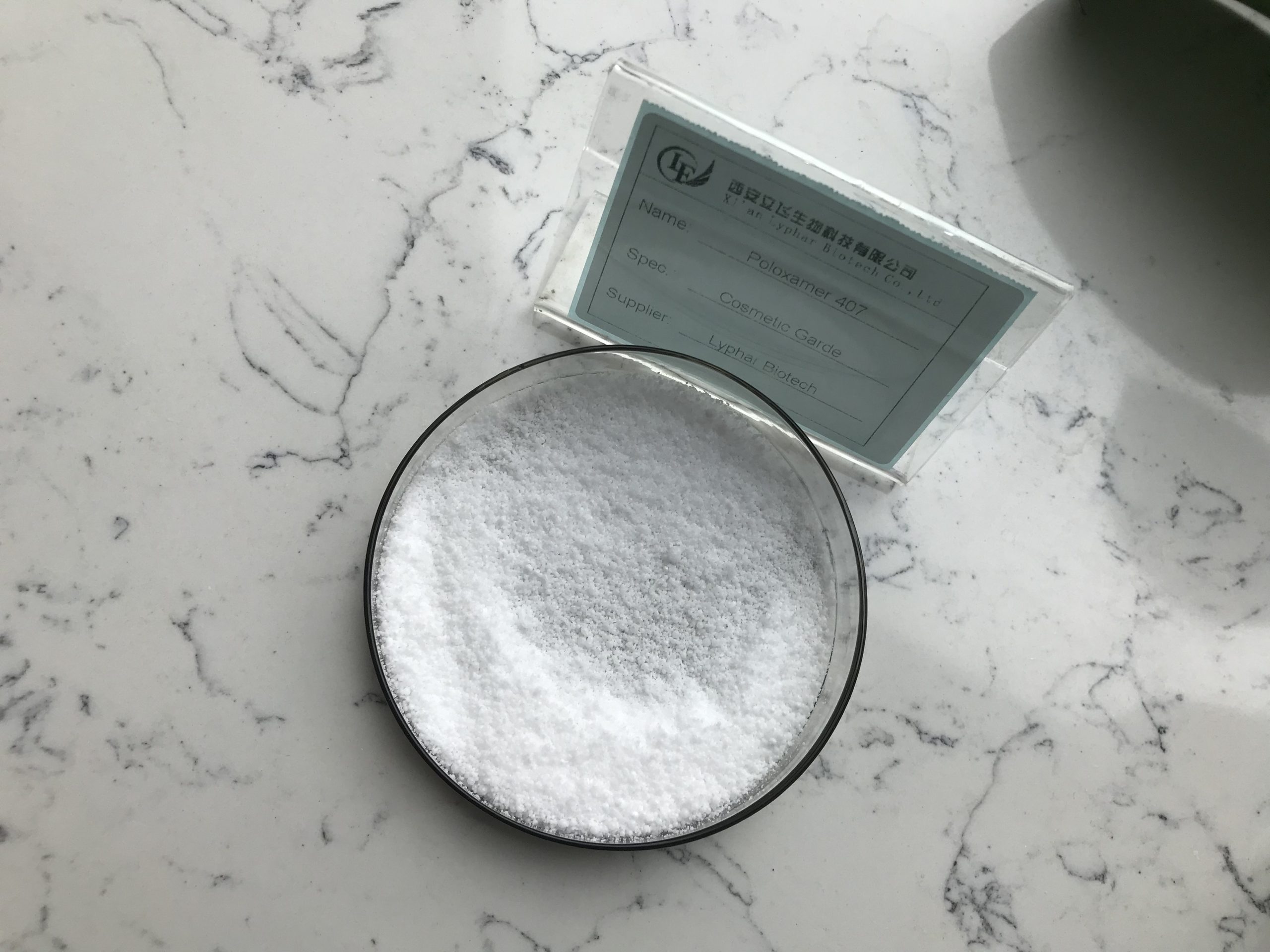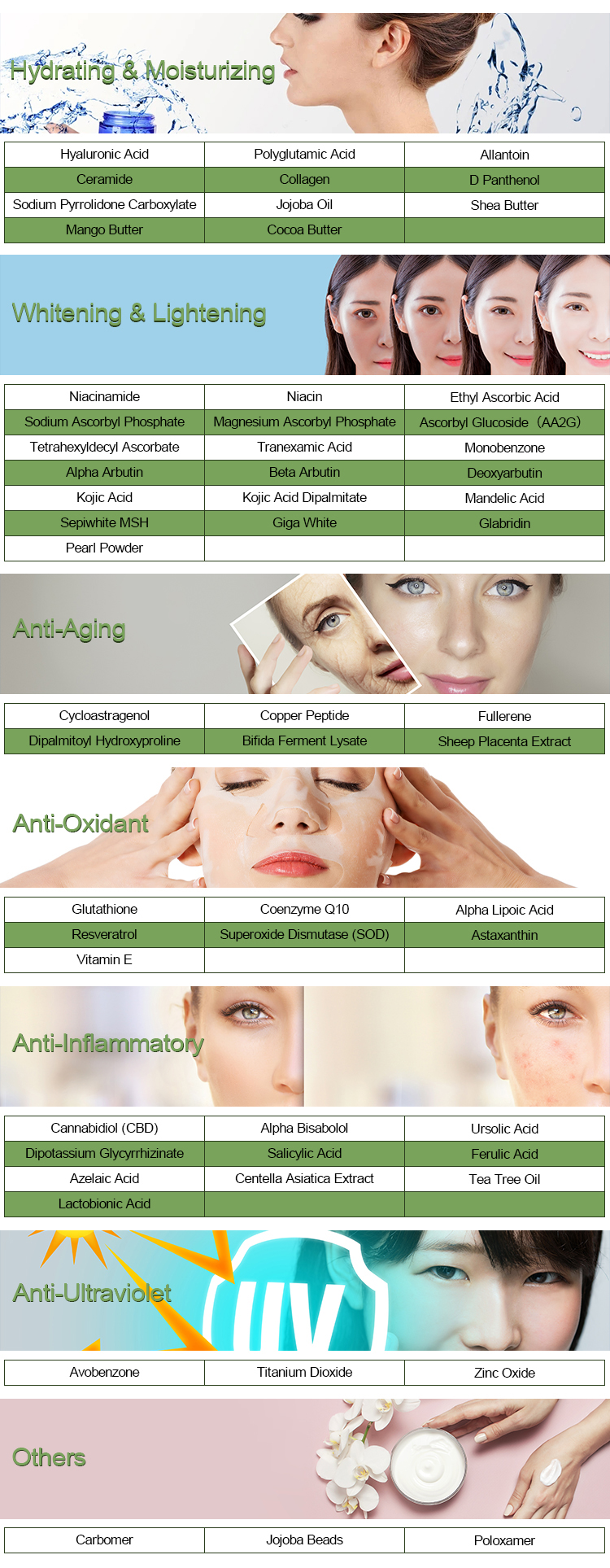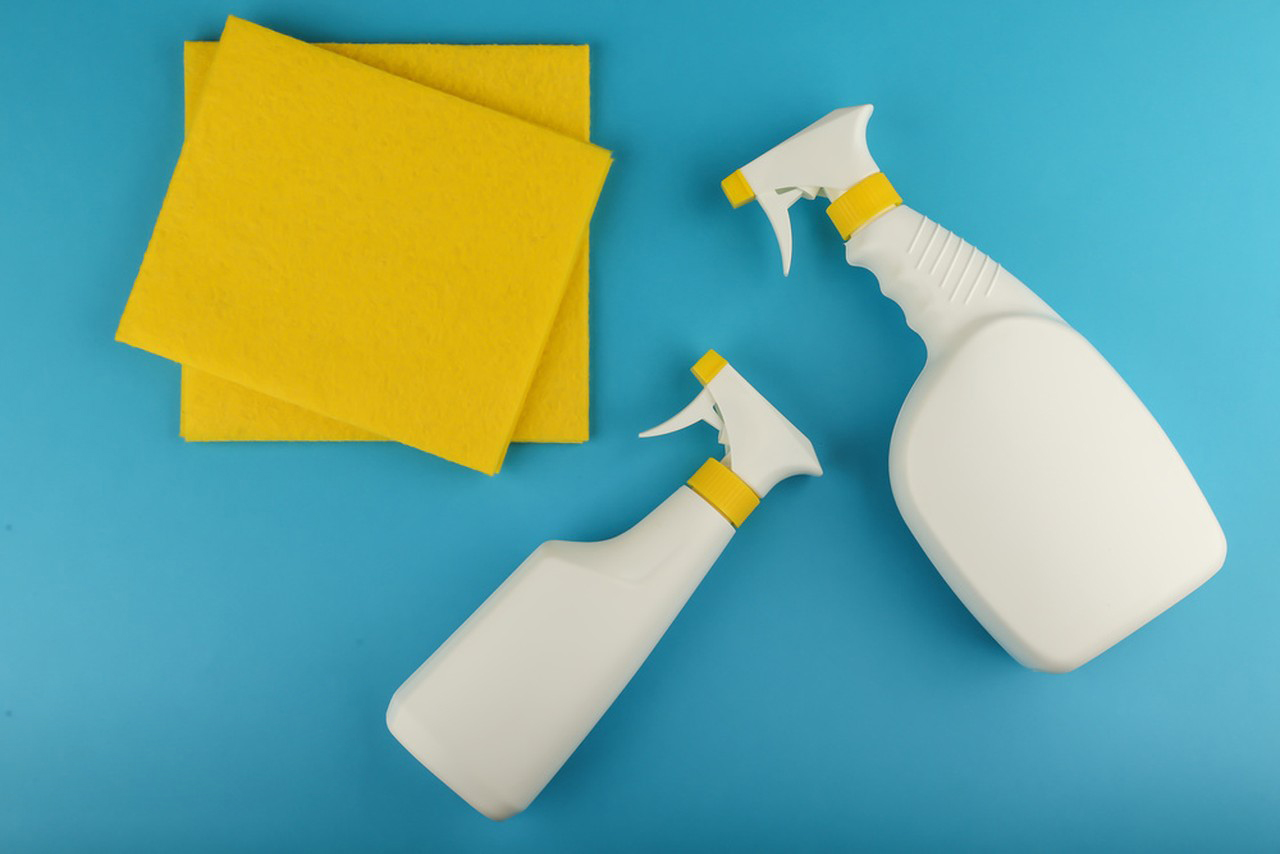Poloxamer 407 and Poloxamer 188 are both part of a family of surfactants called poloxamers, but they differ in their chemical structure, properties, and applications. Here’s a comparison of the two:
1. Chemical Structure
Poloxamer 407: Composed of a central hydrophobic (polypropylene oxide, PPO) block flanked by hydrophilic (polyethylene oxide, PEO) blocks. Its structure is PEO-PPO-PEO. The central PPO block has a higher molecular weight than that of Poloxamer 188, making it a more complex structure.
Poloxamer 188: Also has a PEO-PPO-PEO structure, but with a lower molecular weight of the central PPO block compared to Poloxamer 407, which influences its properties.

2. Physical Properties
Poloxamer 407:
- Forms gels in aqueous solutions at temperatures above its critical gelation temperature (CGT). Typically, its gelation occurs around 20-30°C.
- It is more effective in creating thermoreversible gels.
- Has higher viscosity than Poloxamer 188 when used in solution.
Poloxamer 188:
- Has a lower gelation temperature than Poloxamer 407 and does not form gels as readily as Poloxamer 407.
- It is more commonly used as a stabilizer or emulsifier.
- Lower viscosity compared to Poloxamer 407.
3. Applications
- Widely used in drug delivery systems, particularly for controlled or sustained release formulations.
- Due to its gel-forming properties, it’s useful in topical formulations and in injectable systems where a gel matrix is needed.
- Used in cosmetic formulations for skin care products, such as creams, lotions, and gels.
Poloxamer 188:
- Primarily used as a surfactant, stabilizer, and emulsifier in various pharmaceutical, cosmetic, and food products.
- Commonly used in the formulation of liposomes, emulsions, and suspensions.
- Also employed in the pharmaceutical industry as a solubilizer for poorly soluble drugs.
- It is less likely to form gels compared to Poloxamer 407, so its use is more focused on improving the solubility and stability of drugs in solution.

4. Safety and Biocompatibility
Both are generally considered safe for use in pharmaceuticals and cosmetics. However, the specific formulation and concentration used should always be considered to ensure safety and avoid irritation or adverse reactions.
Poloxamer 407 has been reported to have higher irritation potential in some cases compared to Poloxamer 188, but this largely depends on concentration and specific application.
5. Viscosity and Gelation
Poloxamer 407: Higher molecular weight, leading to stronger gelation and higher viscosity in aqueous solutions. This makes it ideal for use in controlled-release formulations, such as injectable gels.
Poloxamer 188: Its lower viscosity and lack of gelation make it less useful for formulations requiring thickening or gel-like consistency, but it’s more suitable as a dispersing or emulsifying agent.
6. Therapeutic Use
Poloxamer 407: Can be used in controlled-release drug delivery systems, topical gels, and as a solubilizer for hydrophobic compounds.
Poloxamer 188: Commonly used as a stabilizer, emulsifier, or solubilizing agent in injectable drugs, as well as in formulations for wound healing and tissue repair.

Summary Table
| Feature | Poloxamer 407 | Poloxamer 188 |
| Molecular Structure | PEO-PPO-PEO (higher molecular weight PPO) | PEO-PPO-PEO (lower molecular weight PPO) |
| Gelation | Forms gels in aqueous solutions (thermoreversible) | Does not form gels easily |
| Viscosity | Higher viscosity, thicker solutions | Lower viscosity, thinner solutions |
| Applications | Controlled release, gel formulations, drug delivery, cosmetics | Emulsifying agent, solubilizer, stabilizer |
| Temperature Behavior | Gelation occurs above ~20°C-30°C | Does not gel, more soluble at room temperature |
| Primary Uses | Topicals, injectable gels, sustained release | Liposome formulations, emulsions, suspensions |
In summary, Poloxamer 407 is more gel-forming and viscous, making it ideal for sustained-release drug delivery and topical formulations, while Poloxamer 188 is better suited for emulsifying and stabilizing formulations, especially in drug solutions and emulsions where gel formation is not desired.
